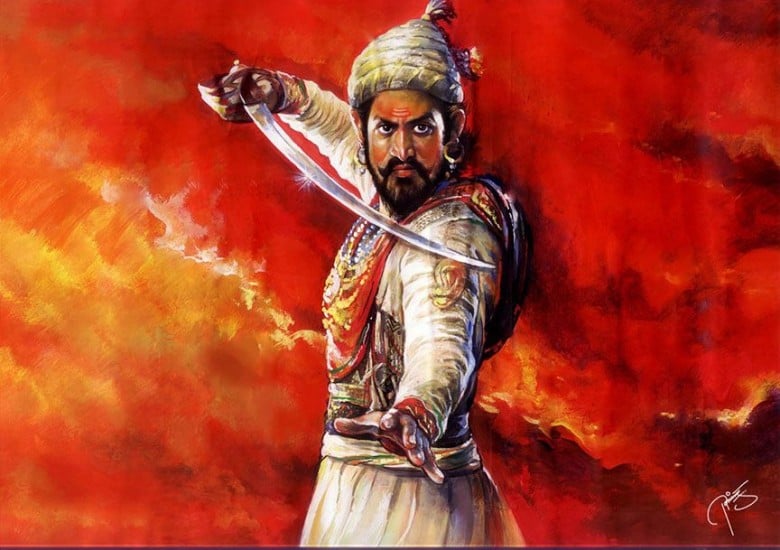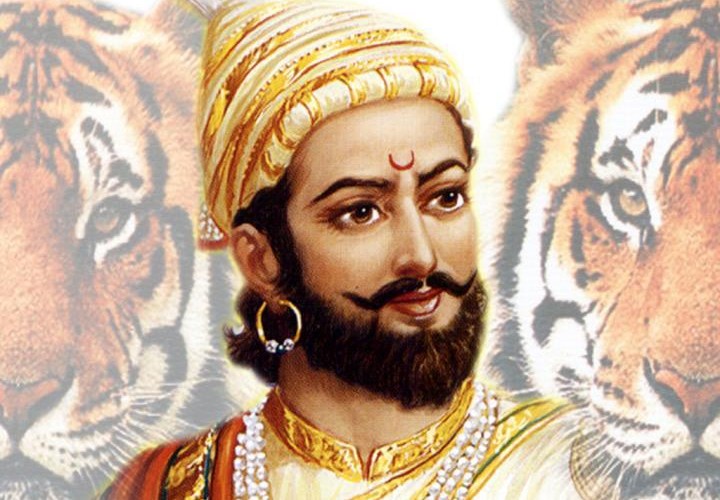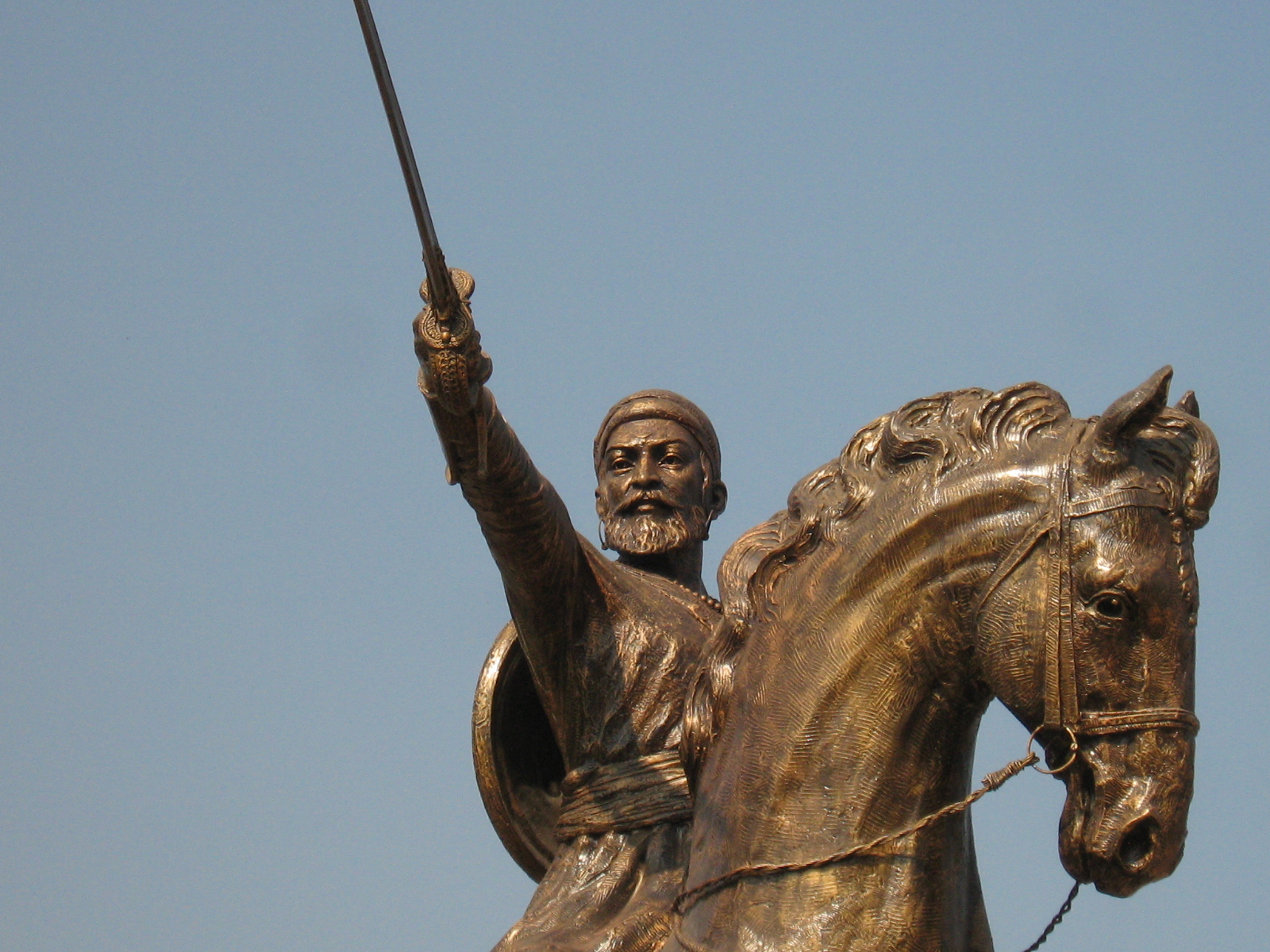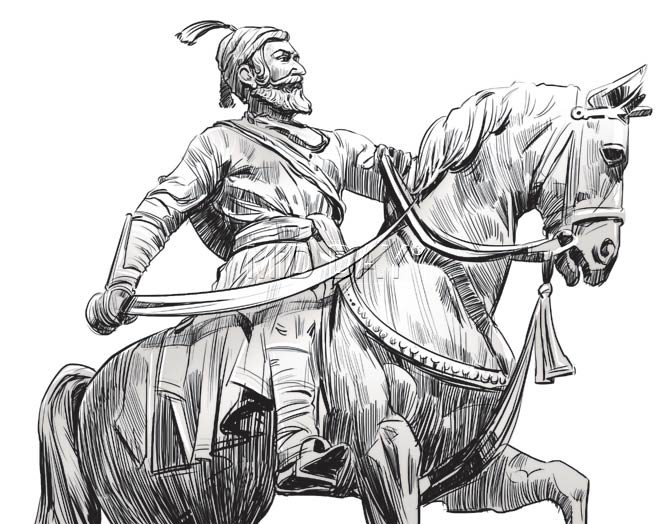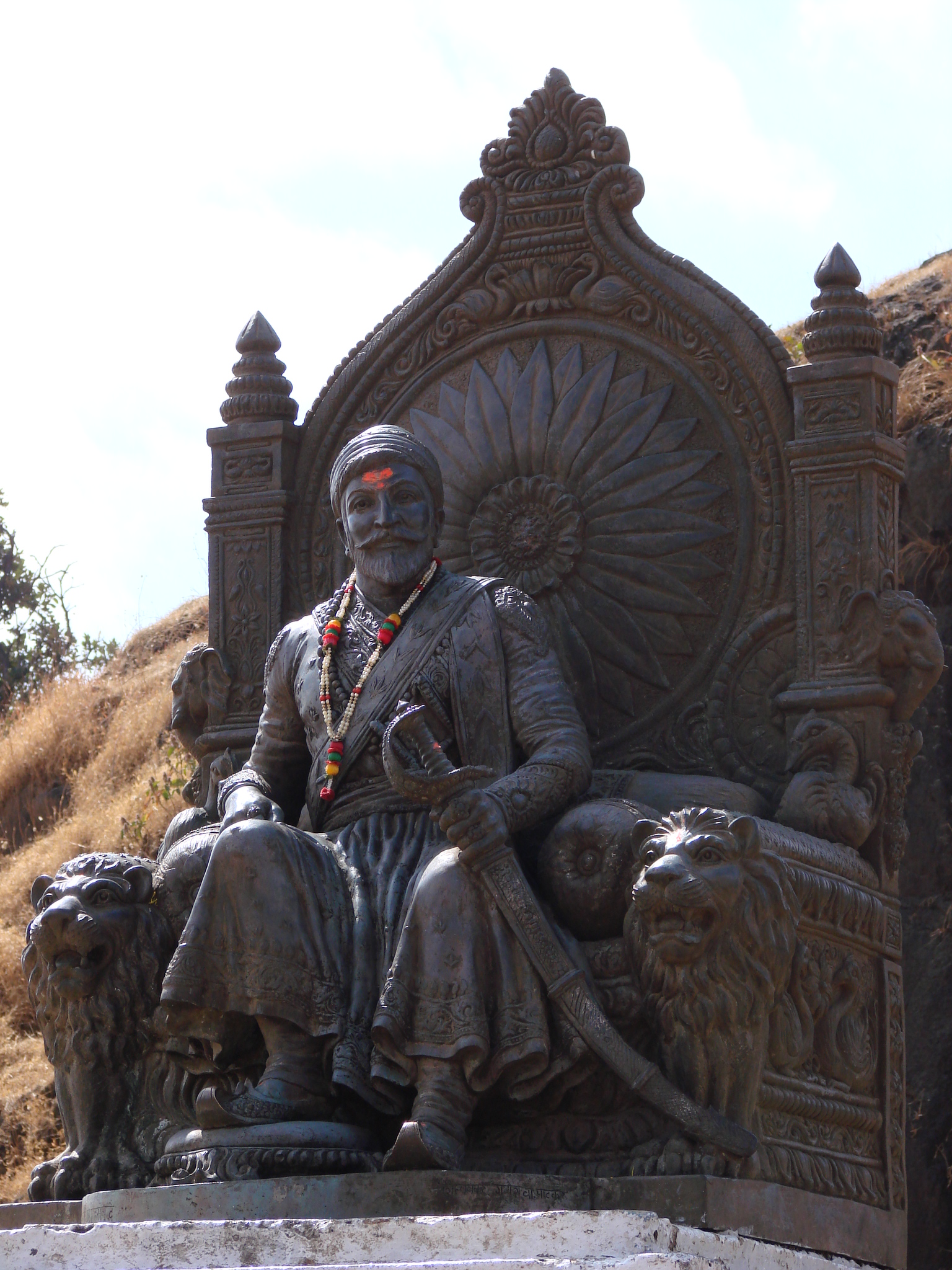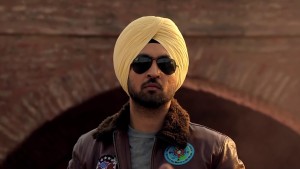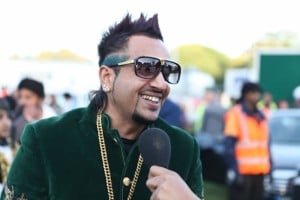Indian history is not only rich in its varied cultures, traditions and religions encompassing several kingdoms and dynasties but also in some of the greatest brave hearts born in the land who made a mark with their sheer courage, fortitude and valorous acts that till present inspire the countrymen and inflame the spirit of patriotism. One such lionhearted gallant warrior was the Indian warrior king Chhatrapati Shivaji Maharaj. This chivalrous warrior who belonged to the Bhonsle Maratha clan led the Hindu warrior group, the Marathas, to revolt against the Adilshahi dynasty and the dominating and far reaching Mughal Empire and established a rebel territory. Under the leadership of Chhatrapati Shivaji Maharaj, the Marathas, who gradually rose to prominence and became well-known for their swift movements, succeeded in stabilising and strengthening their territory while combating the Mughals and thereafter triumphed in taking control of a substantial part of Western India.
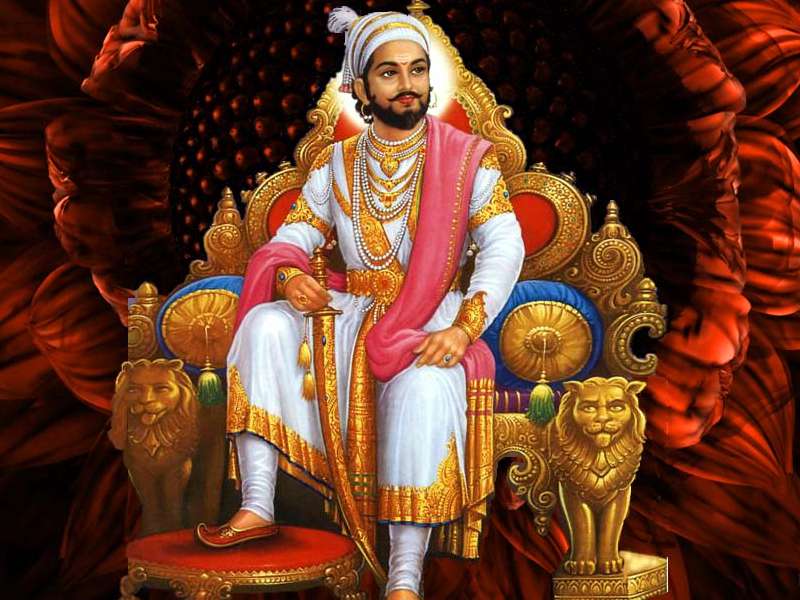
Photo Credit: http://easyhometutor.com/educationtimes/wp-content/uploads/2016/02/Maratha-Sardar-Chatrapati-Shivaji-Maharaj-1.jpg
There are many interesting facts associated with this legendary hero and his legacy, revered as one of the greatest icons in the history of India. Let us have a close look at the legendary journey of this Hindu warrior and the Greatest Maratha ever – Chhatrapati Shivaji.
Balak Shivaji
Shivaji was born in the family of a Maratha general Shahaji Bhonsle and his wife Jijabai in the Shivneri Fort situated close to Junnar city in the district of Pune in Maharashtra, India. Confusion prevails with regard to his birth date with different dates doing the rounds including April 6, 1627 and February 19, 1630, however the latter is acknowledged by the Maharashtra government. His mother Jijabai worshipped goddess Shivai in hope of a healthy child and when her son was born, she named him Shivaji in honour of the deity. His father served the Deccan Sultanates and many a times shifted loyalty between the Mughals, the Adilshah of Bijapur and the Nizamshahi of Ahmadnagar. Shivaji was a doting son of his highly religious mother and took interest in religious teachings. He intricately studied two of the greatest Hindu epics, Mahabharata and Ramayana, which remained great influences throughout his life. Shivaji showed signs of a leader since childhood and grew up under the guidance of his mother and his guru, Dadoji Kondeo, both of whom instilled in him the concept of a Hindavi Swarajya that is a kingdom that will be administered by a Hindu King instead of a Muslim King. Kondeo was a friend-cum-administrator of his father, and taught Shivaji the basic fighting skills and techniques that included sword fighting, archery, marksmanship and horse riding among others.
To further his formal training, Shivaji was sent to Bangalore at twelve years of age. In 1640 Shivaji tied knot with Saibai who hailed from the eminent Nimbalkar family. The way he imbibed the idea of Hindavi swarajya since his early days is manifested from a letter he sent to Dadaji Naras Prabhu sometime in 1645-46. Although he did not have much formal education, Shivaji is considered to have had immense knowledge, scholarliness and enlightenment.
Facts You Didn’t Know About Tipu Sultan, The Tiger Of Mysore
Signs of a Leader
His fleet of comrades and soldiers, with whom he would roam and trek around the mountain range of the Western Ghats encompassing dense forest, included natives from the Maval region like Tanaji Malusare, Baji Prabhu Deshpande, Yesaji Kank and Baji Pasalkar among others. Such adventurous outings gave him a good knowledge about the land that became quite handy for the warrior in his future martial expeditions.
His initial endeavours in forming a Hindavi Swarajya presumably started in his teens when in 1645 he either convinced or bribed Inayat Khan, who was serving as the Bijapuri commander of Torna Fort, to surrender the possession of the fort to him. Similarly, he obtained the fort of Kondana by giving bribe to the governor of Adilshah; and Firangoji Narsala who was a Killedar or commander of the fort in Chakan. Such incidents enraged Mohammed Adil Shah who had Shivaji’s father, Shahaji imprisoned by Baji Ghorpade. Some say that Sahaji was freed in 1649 following surrender of the Kondana and Kandarpi forts by Shivaji and his elder brother Sambhaji, while others say Shahaji remained a prisoner till 1653 or 1655.
Feats and Endeavours of Shivaji
After his father’s death, Shivaji in 1656 raided the Jawali kingdom located in Mahadeva Mountain range and seized it. He soon became a threat for Adilshah and the Mughal Empire, both of whom tried to contain and finish him. In such pursuit the veteran general Afzal Khan was sent by Adilshah to subdue and curtail Shivaji. Shivaji and Afzal Khan met in a hut on November 10, 1659, where it was decided that each would carry only a sword. However Shivaji wore armour and hid a tiger claw and a dagger under his clothes in anticipation of an attack from Afzal Khan. The Persian chronicles accounts Shivaji of treachery while the Maratha chronicles accused Afzal Khan of treachery in a one-on-one combat where Shivaji defeated the experienced general.
Unknown Women Freedom Fighters Who Inspired India’s Independence Struggle
But who can stop the Sun from rising or shining! This brave heart went on a conquering spree by strategically raiding, seizing and capturing many significant forts and gradually made the Marathas an extremely powerful and strategically dominant force in the 17th century. He also built around 15-20 forts including many important sea forts such as Sindhudurg.
His otherwise peaceful relation with the Mughals that included assisting Aurangzeb in conquering Bijapur was hampered in 1657 when his two officers raided Mughal territory near Ahmednagar. Clashes followed for years and on June 11, 1665 Shivaji was compelled to sign the Treaty of Purandar that forced him to give 23 forts to Aurangzeb. In 1966 while he was invited by Aurangzeb to Agra, non-conformity led him to a house arrest from where he eventually escaped and following return to his territory, Shivaji recaptured the forts lost by him through the Treaty of Purandar.
Shivaji – The Strategic Leader
He implemented several avant-garde steps in strategically building up his powerful military that with time became renowned for its swift and strategic movements. He introduced military tactics and remained one of the initiators of commando action or guerrilla warfare methods that were termed as ‘ganimi kava’ at that time. Such endeavours ensured that he remained one step ahead of his enemies, who were colossal and more powerful than him, by remaining in a more strategically advantageous position with regard to factors such as speed, geography and sudden and surprise attacks. The war cry of his Mavala army would be ‘Har Har Mahadev’ in honour of Lord Shiva. With time he converted the number of soldiers from a 2,000 count that his father left for him to a far more impressive count of 10,000. He also built up his own strong and effective navy to protect the Indian coastline from foreign invaders. This brave Maratha Emperor is also considered by some as the ‘Father of Indian Navy’.
Other Facets Of Shivaji
Shivaji was officially crowned as the Chhatrapati of his territory in Raigad on June 6, 1674. He set up structured administrative organisations and along with a well disciplined and skilled military he succeeded in setting up a capable and forward looking civil rule where he re-introduced Hindu political and court traditions. He also made it a point to use Sanskrit and Marathi in administrative and court proceedings instead of Persian language.
Although Shivaji was an ardent follower of Hinduism and the religious beliefs and traditions attached with it and also made effort in reviving the positive facets of the religion, it is also a fact that he was an extremely secular ruler who had respect for other religions and was quite accommodating to people from other religious beliefs. In fact there were many trusted and prominent Muslim soldiers in his Navy namely Daulat Khan and Noor Khan among others. His chief of artillery, Siddi Ibrahim Khan was also a Muslim. His interest in religious teachings often saw him in the company of Hindu as well as Sufi saints.
Shocking Things About Chanakya & His Life Every Indian Should Know
Shivaji had had great regard for women, and never tolerated dishonour or crime against them and punished offenders committing such crimes severely. Women of the territories that he captured were also left unharmed. He was very caring and sympathetic towards his people and never collected taxes from them forcibly or imposed choice of religion on them and treated them as a guardian would.
Death and Legacy of Shivaji
This national hero succumbed to fever in April 1680. He remains one of the greatest icons in the history of India manifested from his all pervasive existence starting from politics, literature, poetry music, theatre and films even after several centuries. Many places including educational institutes, a base of Indian Navy, airport and railway stations are named in his honour. Statues and monuments of this brave warrior adorn many places in India especially in the towns and cities of Maharashtra reminding us about the saga of this Great Indian warrior.

